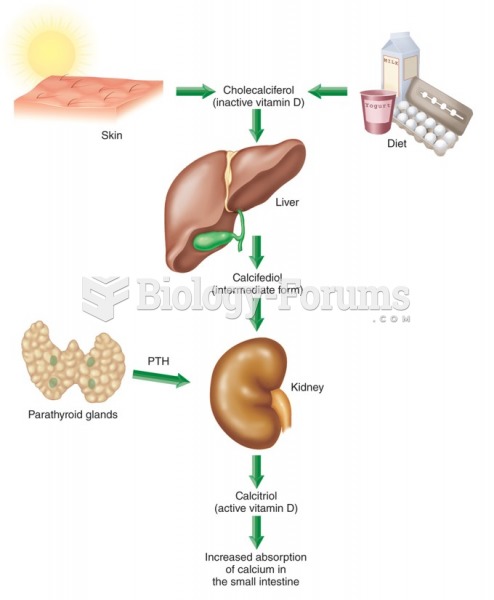This topic contains a solution. Click here to go to the answer
|
|
|
Did you know?
It is difficult to obtain enough calcium without consuming milk or other dairy foods.
Did you know?
Recent studies have shown that the number of medication errors increases in relation to the number of orders that are verified per pharmacist, per work shift.
Did you know?
Looking at the sun may not only cause headache and distort your vision temporarily, but it can also cause permanent eye damage. Any exposure to sunlight adds to the cumulative effects of ultraviolet (UV) radiation on your eyes. UV exposure has been linked to eye disorders such as macular degeneration, solar retinitis, and corneal dystrophies.
Did you know?
The horizontal fraction bar was introduced by the Arabs.
Did you know?
Cyanide works by making the human body unable to use oxygen.
 Healed bone fractures can provide clues about activities and fresh fractures can yield information a
Healed bone fractures can provide clues about activities and fresh fractures can yield information a
 DNA replication. As the two strands of the original DNA molecule unwind, the nucleotide bases on ...
DNA replication. As the two strands of the original DNA molecule unwind, the nucleotide bases on ...





